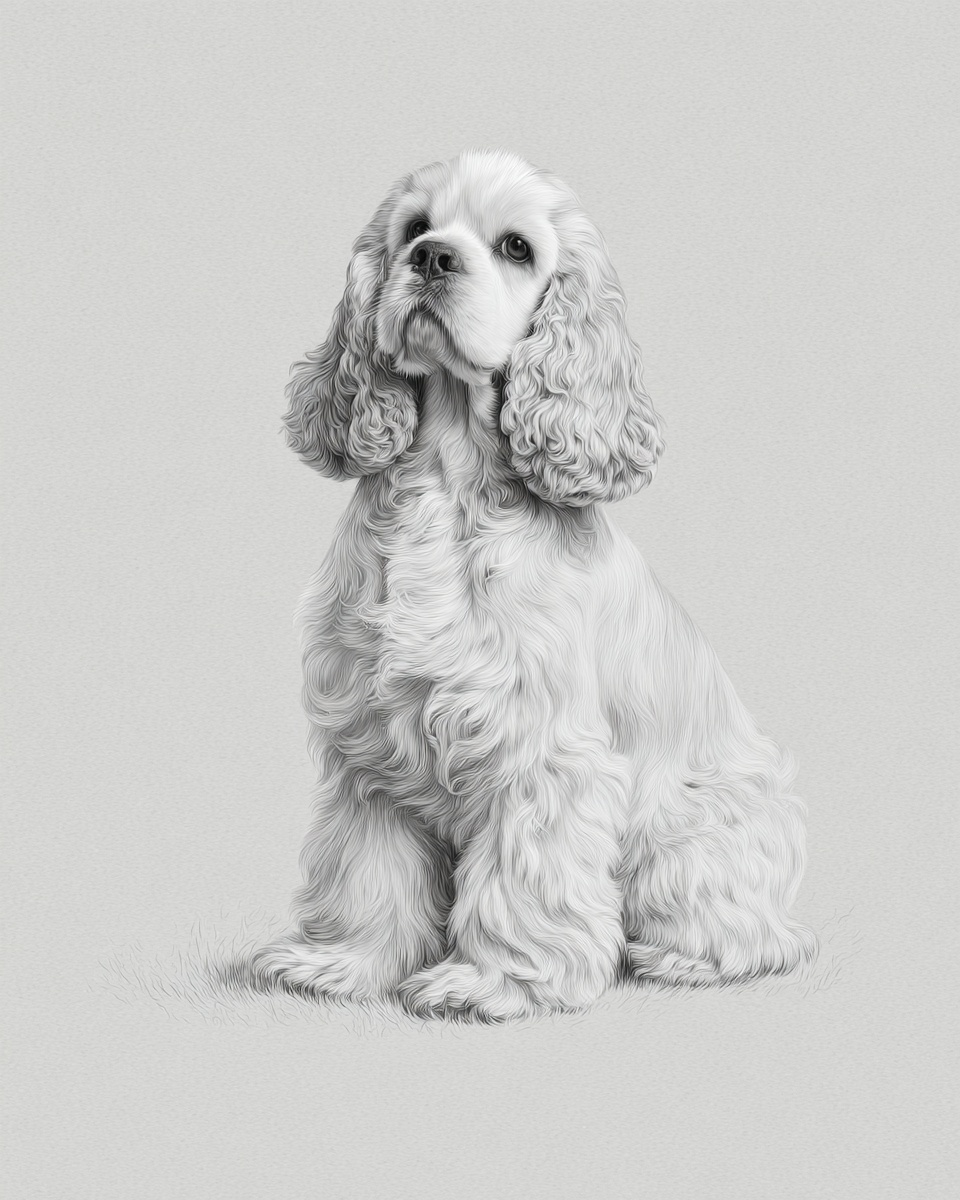Cocker Spaniel

Description
Ever wonder why Cocker Spaniels have such soulful eyes? These dogs, tracing back to Spain, were originally bred to flush and retrieve woodcock birds, which is how they got their name. They’re the smallest of the sporting spaniels in America but pack a lot of personality into their 20 to 30-pound frame. Their long, silky double coat comes in a dazzling array of colors and patterns, from solid black to blue roan and even sable with white markings. Cocker Spaniels are friendly and affectionate, making them great family companions. They get along well with kids and other pets but do need plenty of exercise and mental challenges to stay happy. Without enough activity, they might get bored and start showing some unwanted behaviors. They’re eager to please, which usually makes training a smooth process, but watch out for occasional resource guarding. These dogs thrive on attention and love being part of the action.
Grooming
Cocker Spaniels have a long, silky double coat that requires regular care to stay looking its best. Their moderate shedding means you’ll want to brush daily, using a pin brush followed by a metal comb to reach the skin and prevent mats. Mats can sneak up quickly, especially in humid weather, so don’t skip this step. Bathing every 4 to 6 weeks keeps their coat clean, but make sure they’re fully dry afterward to avoid skin issues. Between full grooms, tidy their feet and sanitary areas to keep them neat and comfortable. - Daily line-brushing to the skin with a pin brush and metal comb - Bath every 4–6 weeks, fully dry coat - Tidy feet and sanitary trims between grooms - Watch for mats, especially behind ears and under legs - Check for tear stains on lighter colors like buff or cream Pro tip: Use a detangling spray before brushing to ease out knots and reduce discomfort.
Learn the Double routine:
→ Complete Double Grooming Guide
Walking
How much exercise does a Cocker Spaniel really need? Aim for about 70 minutes of walking each day, split into two sessions. This breed loves exploring but can tire if pushed too hard, so pacing yourself is key. Walks aren’t just about burning energy; they’re mental workouts too. Include some sniffing time and light training during your strolls to keep their minds sharp. Example routine: Morning: 35-minute brisk walk with some recall practice and sniff breaks. Evening: 35-minute relaxed walk around the neighborhood, letting your dog explore scents at their own pace. This schedule helps prevent boredom and keeps your Cocker Spaniel happy and well-behaved at home.
Boarding
Planning to board your Cocker Spaniel? A crate size between 36 and 42 inches works well, giving them enough room to stand, turn, and lie down comfortably. These dogs enjoy interactive play, so staff should plan for two active play sessions daily, plus scent or brain games to keep their clever minds busy. They thrive on social interaction but can be a bit protective over toys or food, so careful monitoring during group play is important. Staff should note the breed’s moderate barking and occasional resource guarding tendencies. Providing cozy bedding and familiar toys can help ease stress. Regular potty breaks and gentle handling make a big difference in their boarding experience. With the right care, your Cocker Spaniel will feel right at home while you’re away.